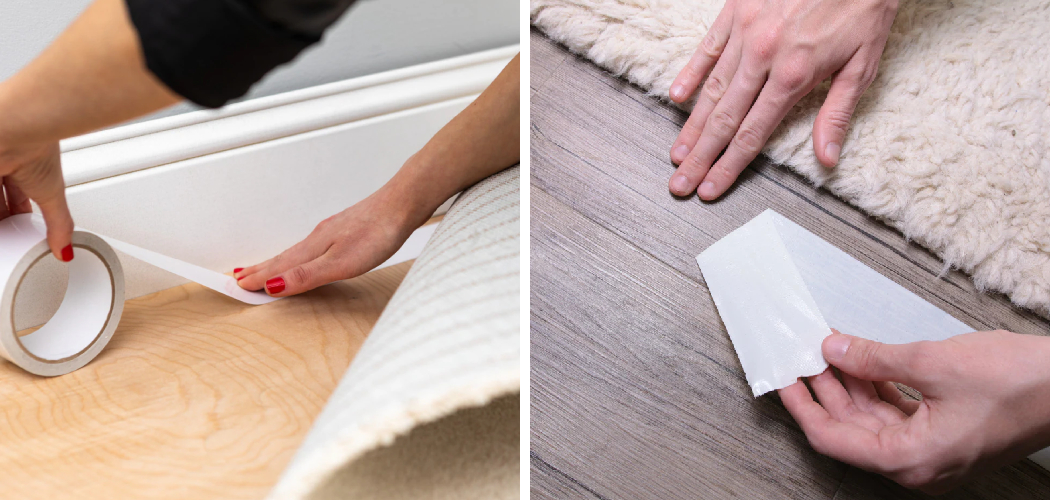Are you wondering how to remove carpet tape from laminate floor? Look no further because we have some easy and effective methods for you!
Removing carpet tape from laminate flooring can be a daunting task. The sticky residue left behind can mar the beauty of your floors, making them look untidy and neglected. However, with the right tools and techniques, it’s possible to restore your laminate floors to their original glory. This guide will walk you through step-by-step instructions on effectively removing carpet tape residue without damaging your floors, ensuring they remain pristine.
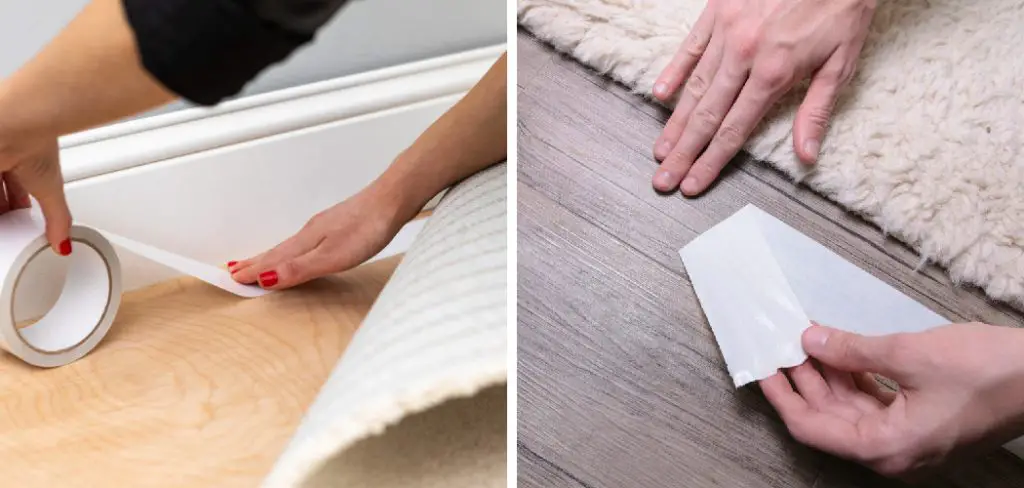
Whether you’re a DIY enthusiast or simply looking to maintain the aesthetic appeal of your home, this guide will provide you with all the information you need to tackle this common household challenge.
What is Carpet Tape?
Carpet tape is a strong adhesive tape that is used to secure carpets on various types of surfaces. It can be a useful tool when installing carpets, but it can also cause damage if not removed properly. Carpet tape typically consists of a high-strength adhesive layer and a backing material, making it extremely sticky and difficult to remove.
It is often used to secure carpets over laminate floors, as it provides a strong hold and prevents the carpet from slipping or moving. However, over time, the adhesive can seep through the carpet and onto the laminate floor, leaving behind an unsightly residue that can be tough to remove.
What Will You Need?
Before you begin the process of removing carpet tape from laminate flooring, it’s important to gather all the necessary tools and materials. Here’s a list of items you will need:
- Razor blade or scraper
- Rubbing alcohol
- Goo Gone or similar adhesive remover
- Soft cloths or paper towels
- Hot water and mild soap
- Hair dryer or heat gun (optional)
- Protective gloves
Now that you have all the necessary tools and materials let’s get started with the step-by-step instructions for removing carpet tape from laminate flooring.
10 Easy Steps on How to Remove Carpet Tape From Laminate Floor
Step 1. Test the Adhesive Remover:
Before you begin, it’s crucial to test the adhesive remover (Goo Gone or similar) on a small, inconspicuous area of your laminate floor. This ensures that the remover does not damage or discolor your flooring. Apply a small amount of the remover to the test area, leave it for a few minutes, then wipe it off and check for any adverse effects.
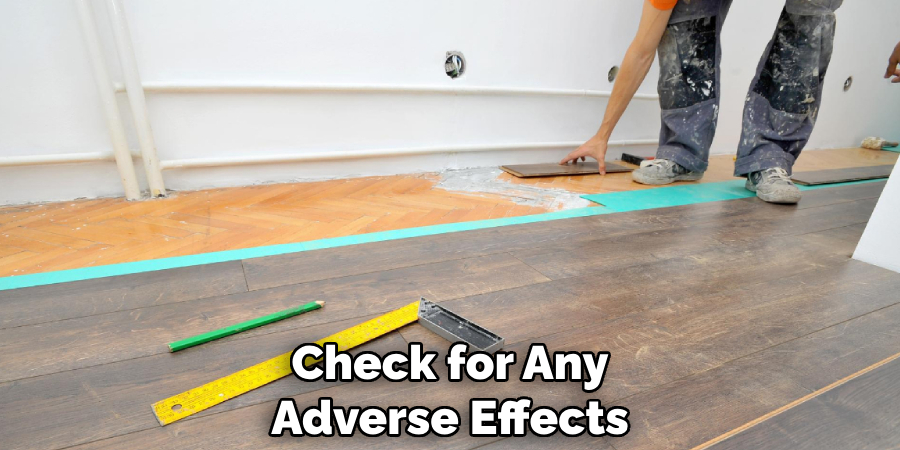
Step 2. Loosen the Tape with Heat:
Use a hair dryer or heat gun to gently warm the area where the carpet tape is attached to the laminate floor. Keep the device moving to avoid overheating any spot. The heat will soften the adhesive, making it easier to peel off the tape. Aim to heat the tape for about 30 seconds to a minute. After heating, use your fingers or a plastic scraper to carefully lift and peel away the tape from the floor. Be cautious not to scratch or damage the laminate surface.
Step 3. Apply Adhesive Remover:
After removing as much tape as possible through heating and peeling, apply a generous amount of adhesive remover (Goo Gone or a similar product) to the remaining residue. Allow it to sit for a few minutes to penetrate and soften the adhesive further. This will make the sticky residue easier to clean off. Ensure you follow the product’s instructions for the amount of time it should remain on the surface before wiping it away.
Step 4. Scrape Off the Softened Residue:
With the adhesive now softened by the remover, take your razor blade or plastic scraper and gently scrape away the sticky residue. It’s important to use a light touch and hold the blade at a shallow angle to avoid scratching the floor. Work slowly and carefully to remove all the adhesive material. If you encounter any particularly stubborn spots, you may need to reapply the adhesive remover and allow it to sit for a bit longer before attempting to scrape again.
Step 5. Wipe Clean with Alcohol:
Once you have removed most of the adhesive residue, dip a soft cloth or paper towel in rubbing alcohol and gently wipe over the cleaned area. Rubbing alcohol will not only help remove any lingering sticky spots but will also act as a disinfectant, leaving your laminate floors looking shiny and new. Ensure you do this step gently to avoid any damage to the floor surface. Allow the area to air dry completely, or use a clean cloth to wipe it dry.
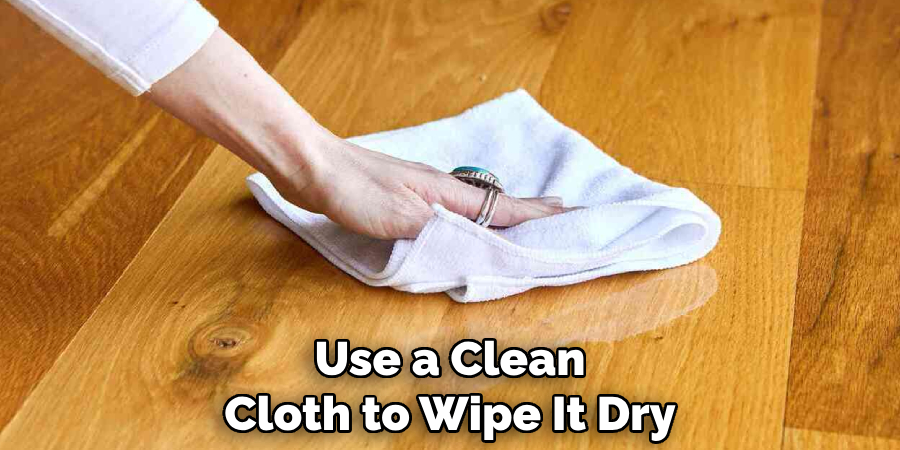
Step 6. Clean with Soap and Water:
After ensuring all the adhesive residue has been removed, and the area is free of rubbing alcohol, prepare a solution of hot water mixed with mild soap. Dip a clean, soft cloth into the soapy water and wring out any excess before gently wiping over the treated area. This step helps to remove any remaining adhesive remover and sanitizes the area, ensuring it’s completely clean. Rinse your cloth with clear water and wipe over the area again to remove any soap residue. Dry the laminate flooring thoroughly with a clean, soft towel to prevent any water spots or damage.
Step 7. Inspect and Repeat if Necessary:
After completing the cleaning process, inspect the area thoroughly to ensure that all traces of carpet tape and adhesive residue have been fully removed. If you find any areas that still have sticky residue or tape fragments, repeat steps 2 through 6 as necessary. It may take a couple of attempts to completely clean the laminate floor, especially if the tape has been in place for a long time. Patience and gentle, consistent effort are key to restoring your floor’s appearance without causing damage.
Step 8. Buff the Floor:
After making sure the laminate flooring is clear of all adhesive and is completely dry, it is time to buff the floor to restore its natural shine. Use a microfiber cloth or a dry mop to gently buff the cleaned area in a circular motion. This step will help remove any small scratches that may have been caused during the cleaning process and will also bring back the floor’s original luster. It’s also an effective way to ensure there are no water marks left on the surface.
Step 9. Protect the Area:
Now that your laminate floor is clean and restored to its original beauty, consider applying a protective finish or sealant. This can help guard against future adhesive residue and make cleaning easier. Choose a laminate floor sealant that is appropriate for your type of flooring, and follow the manufacturer’s application instructions carefully. Applying a sealant is an optional step, but it can add an extra layer of protection to your floors, keeping them looking pristine for longer.
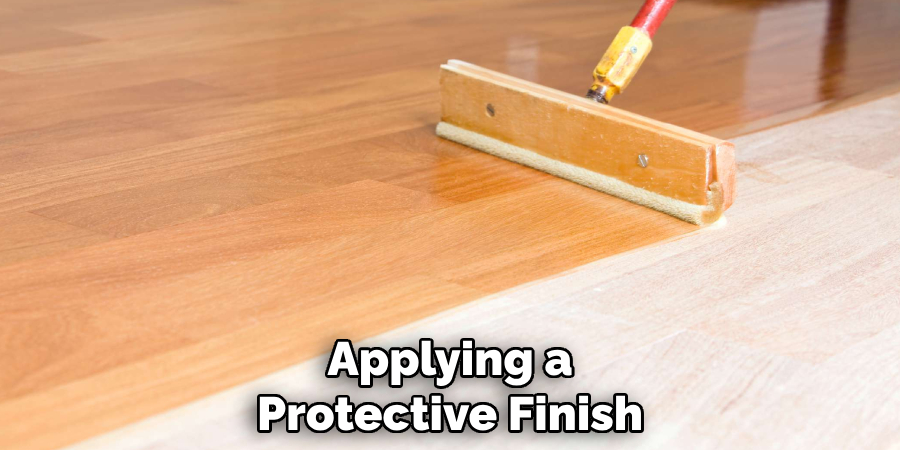
Step 10. Regular Maintenance:
For ongoing care, regularly sweep or vacuum your laminate floors to remove dirt and debris that can cause scratches and dullness over time. A soft-bristled broom or a vacuum cleaner with a hard floor setting is key to preventing potential damage.
In addition, periodic mopping with a damp (not wet) mop and a laminate floor cleaner will maintain the shine and prevent buildup. Avoid using excessive water or harsh chemicals, as these can damage the laminate surface. Adhering to a consistent cleaning routine will keep your floors looking their best and extend their lifespan significantly.
By following these steps, you can effectively remove unwanted carpet tape residue without damaging your laminate floors. With a little patience and the right tools, you can restore your floor’s shine and keep them looking their best for years to come.
5 Additional Tips and Tricks
- Use Ice to Harden the Tape: Applying ice to the carpet tape for a few minutes can harden it, making it easier to scrape off. This method is particularly useful for thick or gooey adhesive residues.
- Apply WD-40: WD-40 is not just for squeaky hinges! Apply a small amount onto the tape residue and wait a few minutes for it to break down the adhesive. Wipe clean with a soft cloth, but remember to clean the area with a gentle cleaner afterward to prevent slipping.
- Try a Hair Dryer: Applying heat with a hairdryer can soften the tape adhesive, making it simpler to peel off. Keep the heat source moving to avoid damaging the laminate finish, and use a plastic scraper to gently remove the softened tape.
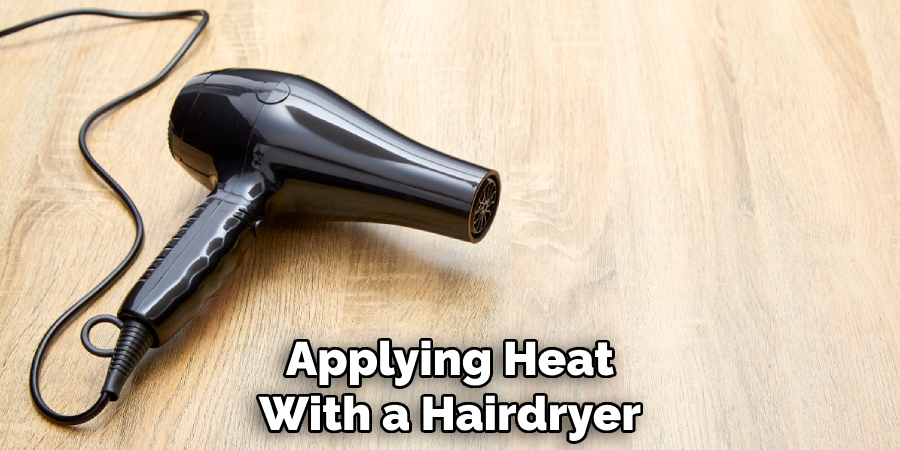
- Use Vinegar Solution: Mix equal parts of water and white vinegar to create a natural solvent to break down the adhesive. Apply it to the tape residue, wait for several minutes, then gently wipe or scrape away it.
- Commercial Goo Remover: If all else fails, there are products specifically designed to remove sticky substances without damaging surfaces. Test the product on a small, inconspicuous area of your laminate flooring first to ensure it doesn’t harm the finish.
With these additional tips and tricks, removing carpet tape from laminate flooring should be a breeze. Remember to always test any method or product on a small area first and proceed with caution to avoid damaging your floors.
6 Things You Should Avoid
- Don’t Use Sharp Metal Scrapers: Utilizing sharp metal tools can scratch or gouge your laminate flooring. Instead, opt for plastic scrapers or putty knives that are less likely to cause harm.
- Avoid Excessive Heat: While moderate heat can assist in softening adhesive, applying too much heat directly to laminate can result in warping or discoloration of the flooring. Always use a hair dryer on a low setting and keep it moving.
- Steer Clear of Harsh Chemicals: Strong solvents and chemicals can strip away the protective coating on laminate floors or even discolor them. Before using any chemical, read the label and ensure it’s safe for use on laminate.

- Do Not Saturate the Floor: Applying too much liquid, whether water, vinegar solution, or any liquid cleaner, can damage laminate flooring. Laminate is prone to warping when wet, so always use minimal liquid and dry the area thoroughly afterward.
- Avoid Scrubbing Aggressively: Vigorous scrubbing can dull the finish of your laminate flooring. If removing the tape residue requires more than gentle wiping or scraping, reconsider your method or material to ensure you’re not compromising the floor’s integrity.
- Don’t Rush the Process: Removing carpet tape from laminate flooring can be a time-consuming task, but it’s essential to take your time. Rushing through the process can result in damage to your floors or incomplete removal of the adhesive residue. Be patient and thorough for the best results.
By avoiding these potential pitfalls, you can safely and effectively remove carpet tape from your laminate flooring without causing any damage. Remember to always proceed with caution and take the necessary precautions to protect your floors.
What are the Natural Alternatives?
While there are many commercial products and methods available to remove carpet tape from laminate flooring, some people prefer to use natural alternatives. Here are a few options to consider:
- Coconut Oil: Like WD-40, coconut oil can break down adhesive residue without damaging the floor. Apply a small amount and wait for it to soften the tape before wiping it away.
- Baking Soda and Cooking Oil: Mix together equal parts of baking soda and cooking oil to create a paste that can be applied to the tape residue. Let it sit for a few minutes before gently wiping or scraping it off.
- Lemon Essential Oil: Lemon essential oil is known for its natural cleaning properties and can break down adhesive residue. Apply a few drops onto the residue and let it sit for a few minutes before wiping it off.

Remember to always test these natural alternatives on a small area first to ensure they do not damage the laminate floor’s finish.
How Can You Make Laminate Floors Shine?
After removing the carpet tape and adhesive residue from your laminate flooring, you may notice that the area has lost its shine. Here are a few tips to make it shine again:
- Regular Cleaning: Simple regular cleaning with a damp mop can help maintain the shine of laminate flooring. Avoid using too much water or harsh cleaners, as they can dull the finish.
- Vinegar Solution: Mix equal parts of water and white vinegar to create a natural cleaner that can restore shine to laminate flooring. Simply dampen a mop with the solution and clean as usual.
- Polishing Products: There are specific polishing products available for laminate flooring that can help restore its shine. Be sure to read the label and use it according to the manufacturer’s instructions.
- Steam Mopping: Consider using a steam mop on your laminate floors for a deeper clean. The heat and gentle pressure can help remove any built-up residue and restore shine.
Maintaining the shine of your laminate flooring can also help prevent future adhesive residue from sticking to it. So, remember to regularly clean and care for your floors to keep them looking their best.
What are the Disadvantages of Using Carpet Tape on Laminate Flooring?
While carpet tape can be a useful tool for keeping rugs and mats in place on laminate flooring, there are also some potential disadvantages to consider:
- Residue Buildup: Over time, the adhesive residue from carpet tape can build up on laminate flooring and become difficult to remove. This buildup may require frequent cleaning or potentially damage the floor’s finish.
- Damage to the Floor: If not removed carefully, carpet tape can cause damage to the laminate flooring, including scratches, discoloration, or even warping. Additionally, aggressive methods of removal can also harm the floor’s finish.
- Safety Hazard: In high traffic areas or with frequent use, carpet tape may become loose and create a tripping hazard. This is especially dangerous for young children or elderly individuals.
- Difficulty in Removing: As mentioned earlier, removing carpet tape from laminate flooring can be a time-consuming and challenging task. This may discourage some people from using it to keep carpets in place.
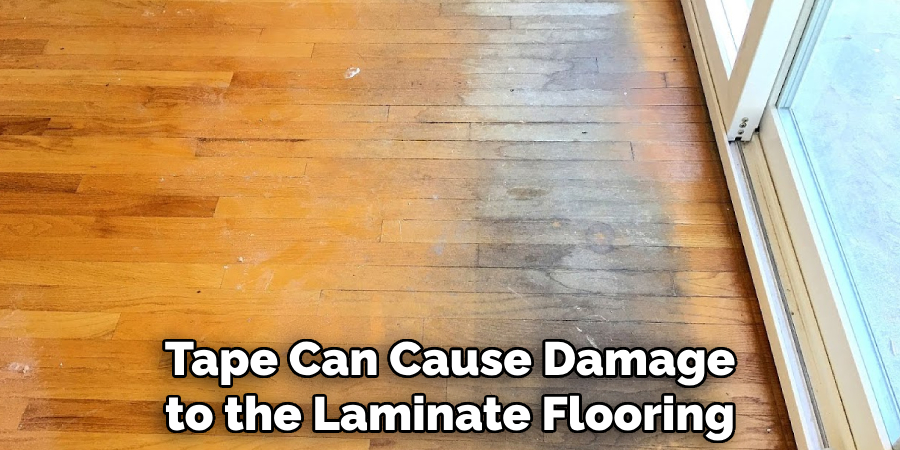
Considering these potential downsides, it’s important to use carpet tape sparingly and remove it properly to avoid any damage or safety hazards on your laminate flooring.
Conclusion
In conclusion, while carpet tape offers a convenient solution for keeping rugs and mats secure on laminate flooring, its removal necessitates careful consideration to prevent damage. Utilizing gentle methods and opting for natural cleaners or specialized products when needed can effectively dissolve and lift adhesive residues without compromising the integrity of the flooring.
By following the precautions and techniques outlined above, you can ensure that your laminate floors remain pristine and unblemished by carpet tape residue. It’s crucial to maintain a balance between functionality and care to preserve the beauty and longevity of your laminate flooring.
Hopefully, the article on how to remove carpet tape from laminate floor has provided you with useful information and insights to help you tackle this task. Remember to always proceed with caution, take your time, and prioritize the protection of your floors to achieve the best results. So, go ahead and give it a try!

